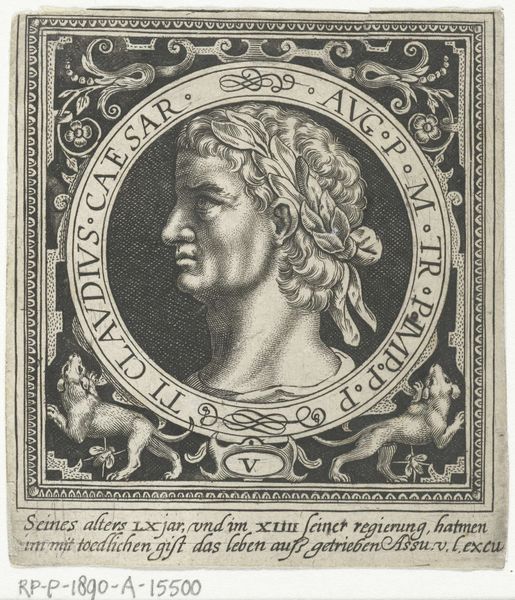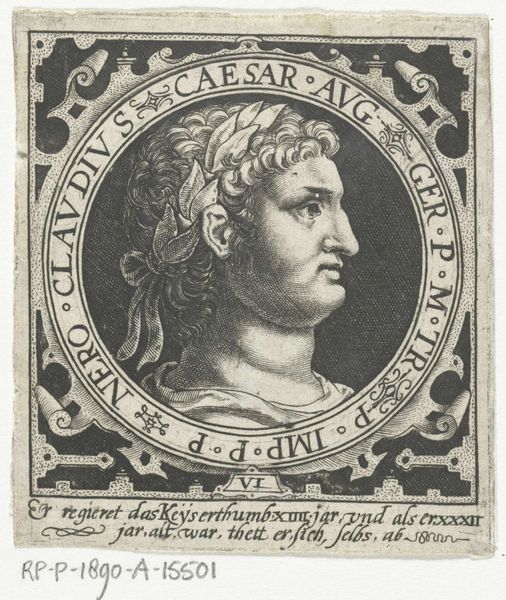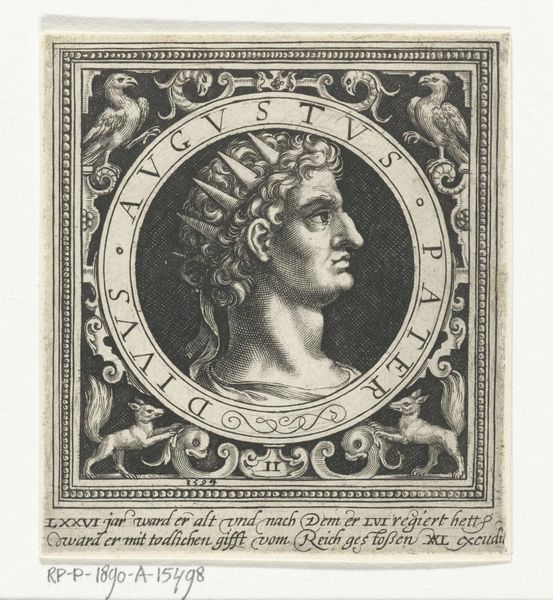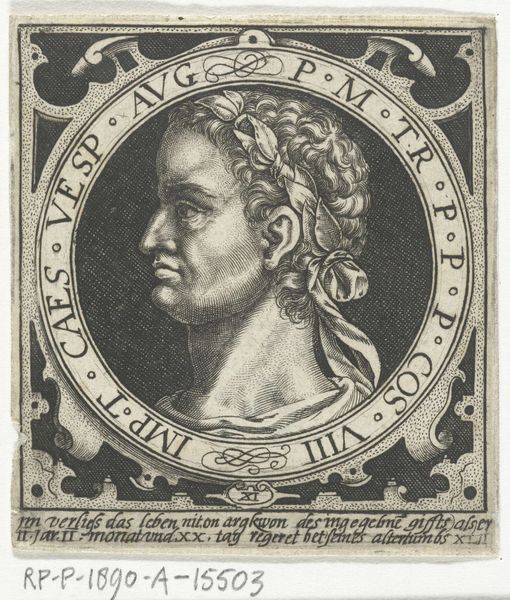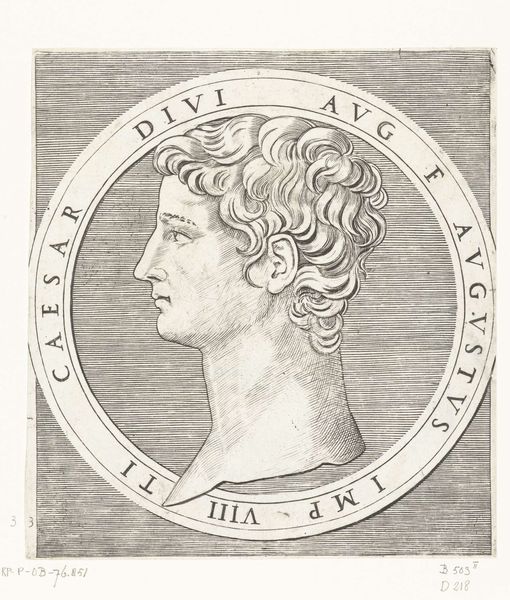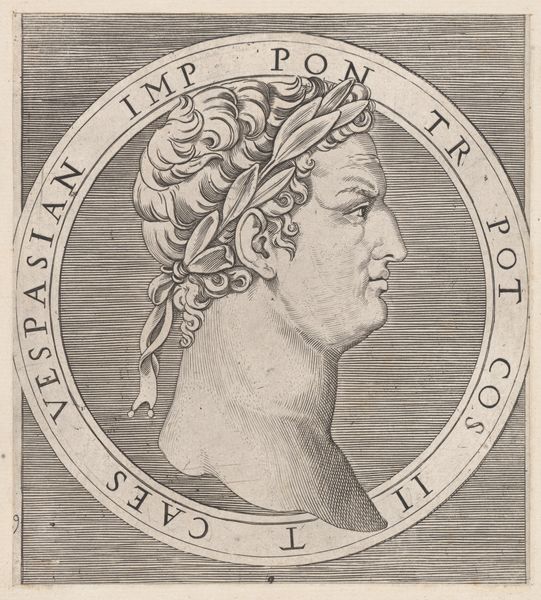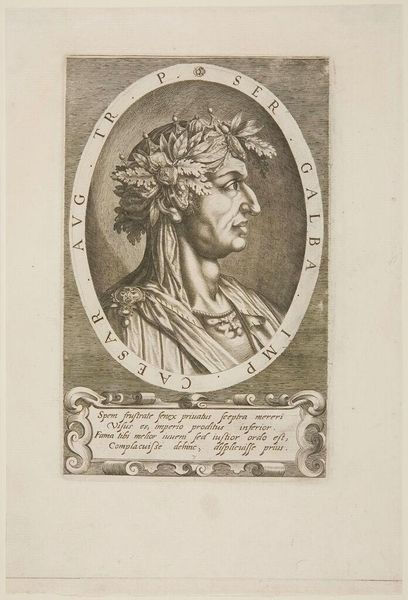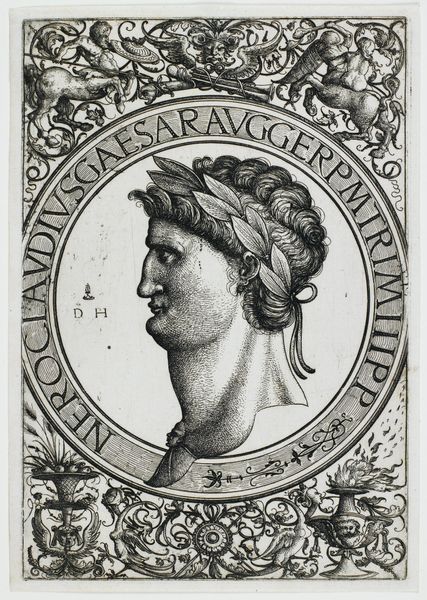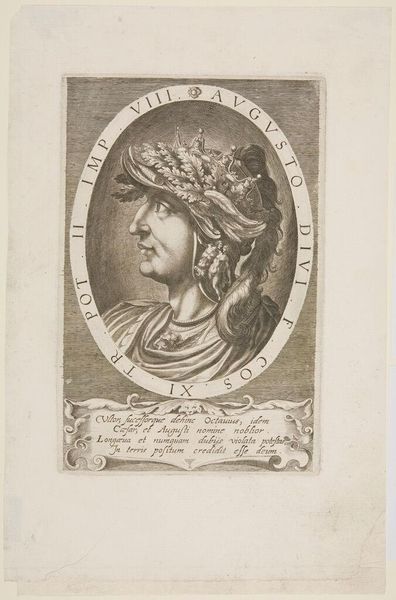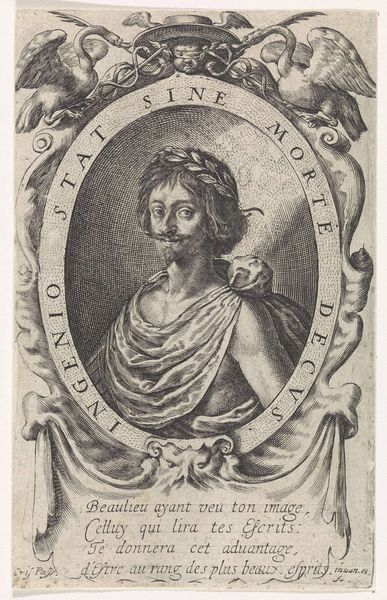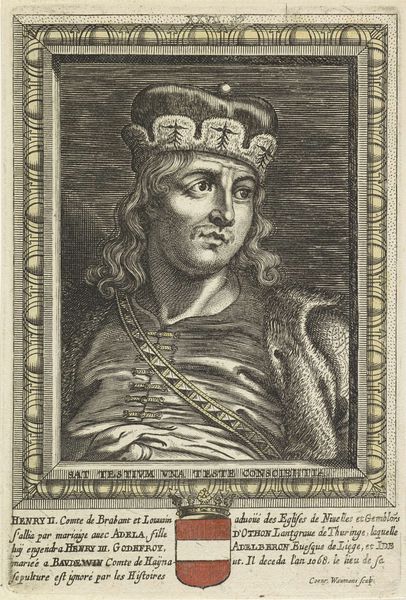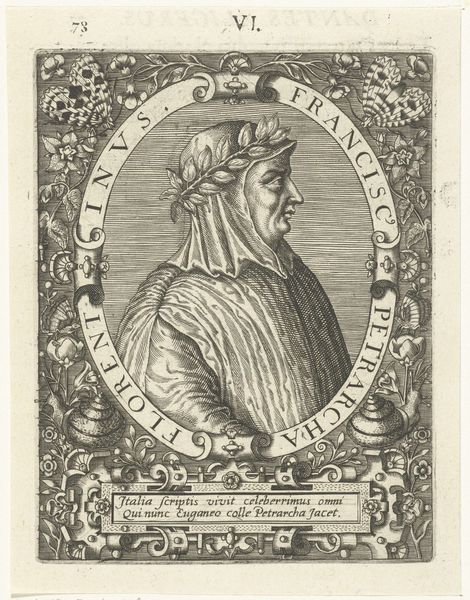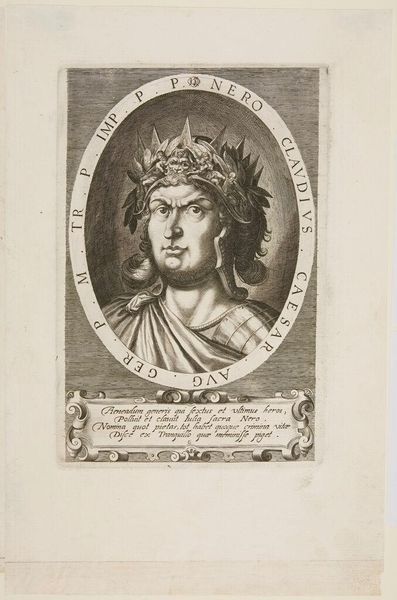
print, engraving
#
portrait
# print
#
ancient-mediterranean
#
history-painting
#
engraving
Dimensions: height 86 mm, width 76 mm
Copyright: Rijks Museum: Open Domain
Curator: Nicolaes de Bruyn created this engraving, "Portret van Germanicus op medaillon," in 1594. It's currently housed here at the Rijksmuseum. Editor: My first thought? There's a somber quality to the work, almost haunting. The textures achieved with just lines are incredible, especially the laurel wreath. Curator: Germanicus was a prominent Roman general. He's often viewed through the lens of a tragic hero—admired and popular, but his life was cut short. This engraving engages with a much longer history of representing powerful men. Editor: The circular frame enhances that sense of contained, almost stifled power, don't you think? And the lettering surrounding the portrait, it’s not merely descriptive; it almost feels like an inscription on a tomb. Curator: Absolutely. This print reminds us how representations of powerful men and their legacies intersect. What does it mean to immortalize someone? What values are being promoted? And who gets to control that narrative? Even that little scene with seahorses adds to that narrative. Editor: I see that you interpreted the added ornamentation beyond the pure structure and shapes. For me, that highly ornamental frame provides such an interesting contrast to the stern profile. The level of detail using the engraving technique really highlights the meticulous effort in its construction. Curator: Consider how access to images of power like this served specific socio-political functions. For the wealthy or scholarly, owning an image like this was akin to having a direct connection to antiquity, and Roman virtues were deployed to assert specific political claims. Editor: I suppose. But from a purely aesthetic standpoint, it shows how simple lines and values can communicate so much information—structure, texture, form, emotion. I can get lost simply tracing the curves of the portrait or those seahorses. Curator: Engaging with the visuality is crucial. But also consider how Germanicus, the historical figure, was manipulated through historical narratives for contemporary audiences. This image does more than represent; it participates in that long lineage of manipulation, consciously or not. Editor: Looking at it, I'm drawn to how formal constraints can really shape how an audience connects with something. Thinking about its details in how it affects the tone opens things up for me. Curator: I agree. Appreciating that tension helps me read this work in the context of power dynamics, of art, and the politics of representation.
Comments
No comments
Be the first to comment and join the conversation on the ultimate creative platform.
